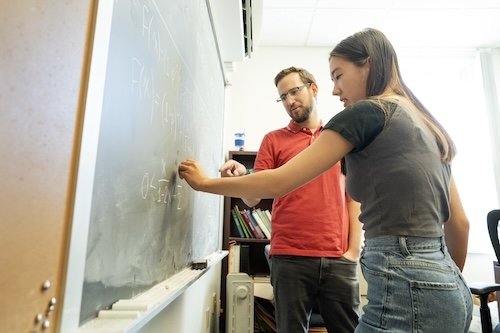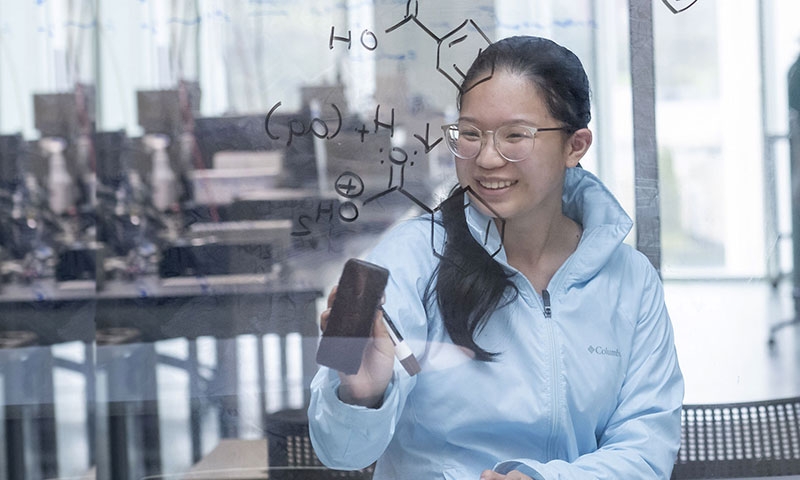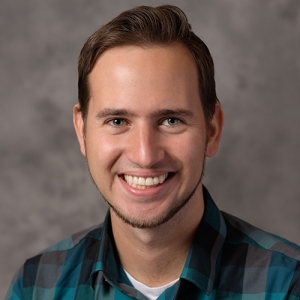Imagine you are an art collector looking to expand your collection. Your long-term goals are twofold: to optimize the monetary value of your collection while also maintaining an aesthetically pleasing one.
How do you balance the two competing goals?
Audrey Benson ’25 hopes to solve the problem.
Working with Phanuel Mariano, assistant professor of mathematics, Benson is researching a mathematical model that promises to upend the collecting world.
Guided by a series of complex, random matrices, Benson’s research could be a boon not only for the burgeoning art collector world, but have practical applications to anyone who collects assets for both financial and emotional purposes. This could include cars, wine and coins.
Previous studies have shown that one out of every three Americans might be collecting something.
“It’s been exciting,” said Benson, a mathematics major from Poughkeepsie, N.Y. “I’ve worked on other projects before, but this is the first one I’m doing on my own.”
Benson’s project began last summer as part of a National Science Foundation grant awarded to Mariano. The student and her professor wanted to build upon a recent study that developed a mathematical model for art collectors.
That model relies heavily on principles and concepts familiar to mathematicians, including the Bernoulli random variable, Lyapunov exponents and Fibonacci sequences.
The exponential growth-rate of the long-term value of the assets is known as the Lyapunov exponent. The bigger this number, the more the assets grow. Computing this exponent is difficult if not impossible in most situations, according to Mariano. Benson’s project involves a new method for computing the exponent using a surprising connection to Fibonacci sequences, in which each term is equal to the sum of the two preceding elements.
Got that?
“It’s all one big puzzle,” said Mariano, who is in his fifth year at Union. “We are trying to solve the puzzle, step by step.”
The two meet twice weekly to review Benson’s research.
“We get along really well,” said Benson. “I took a probability class with him, and I really understand the way he explains things.”
Benson didn’t always have a love for numbers. She hated math in high school. She planned to major in English when she came to Union. After taking a couple of math courses and doing well, however, she was sold.
“I feel like everyone grows up being taught to hate math,” said Benson. “Once you sit down and realize math is more like a puzzle, you appreciate it more.”
The hands-on research has helped Benson develop other skills, including coding.
“I’m learning so much more outside of math,” she said.
Mariano appreciates the opportunity to work with students like Benson. Faculty-mentored undergraduate research is a staple of Union’s curriculum.
“If I taught at a big research university, it would be hard to work one-on-one with undergraduates,” he said. “It’s nice to be at a place like Union, where we have the opportunity to find students like Audrey who are motivated and we get to assist them.”
Benson will present her research in January at the Joint Mathematics Meetings, the world's largest gathering of mathematics enthusiasts and professionals, in Seattle. Mariano will also attend.
The two hope to eventually get the study published in a professional mathematics journal.
Benson plans to attend graduate school and ultimately earn a Ph.D. in statistics.
It is all heady stuff for a student who expected to be an English major but is now a self-confessed math geek.
“It’s not like you against math,” Benson said of the subject that suffers from a bad reputation. “You and math can actually work together.”


